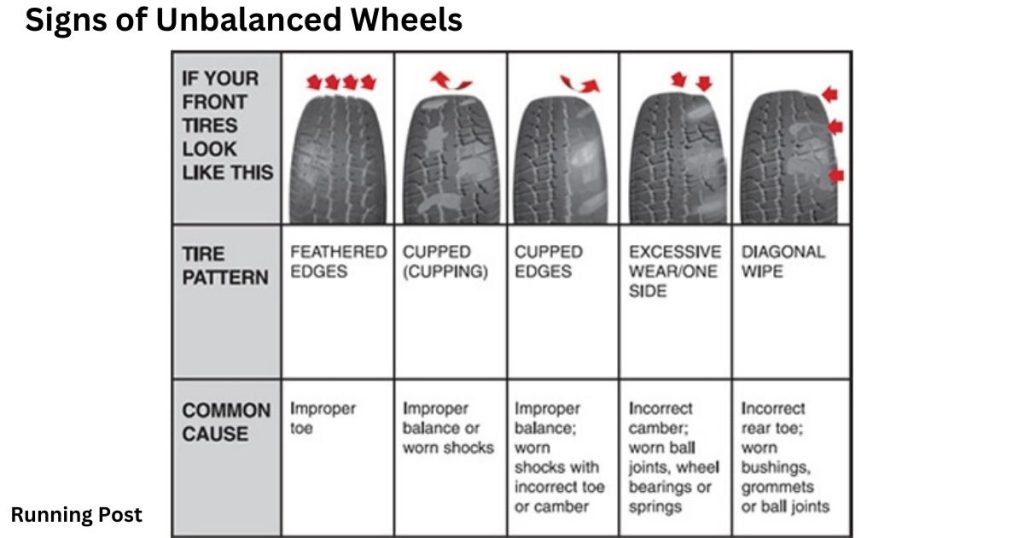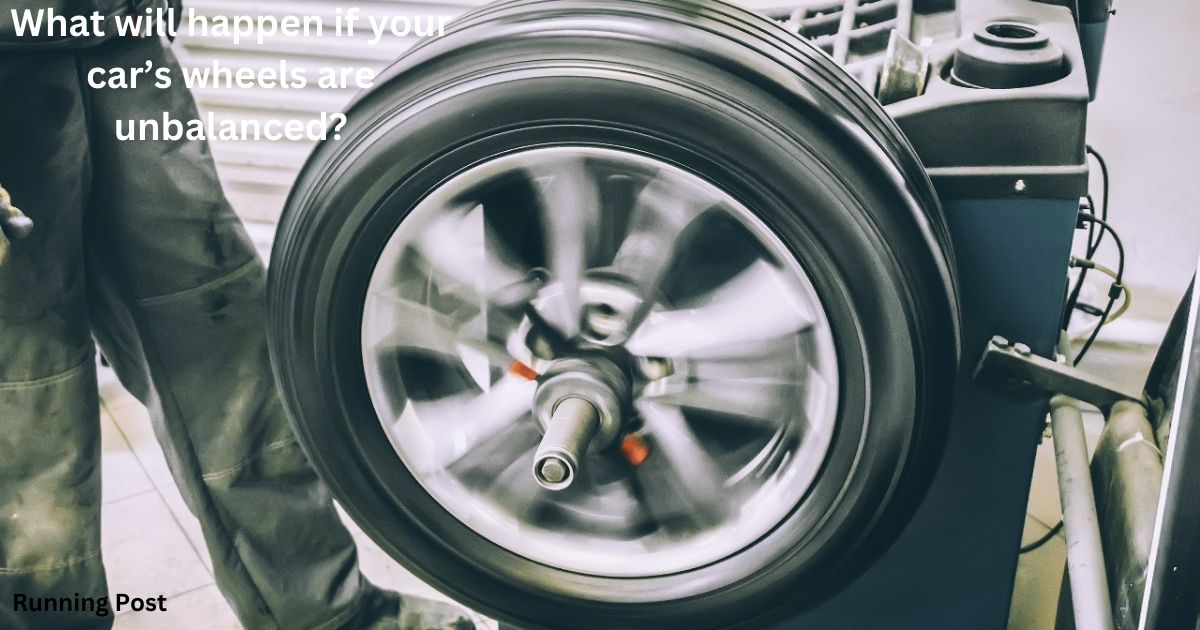| A: The steering will vibrate | B: The car’s fuel efficiency will improve | C: The car’s engine performance will increase | D: The brakes will fail |
Introduction
Maintaining proper wheel balance is crucial for a smooth and safe driving experience. Balanced wheels ensure that the weight distribution around the wheel is even, allowing the vehicle to handle properly and operate efficiently. When wheels are unbalanced, it can lead to a host of problems, including vibrations, uneven tire wear, and compromised handling. These issues not only affect the comfort of your drive but can also pose safety risks and lead to more expensive repairs down the line. For instance, an unbalanced wheel can cause the steering wheel to shake, leading to a less controlled driving experience. Additionally, it can result in accelerated tire wear, which might necessitate earlier tire replacements. Addressing wheel imbalance promptly is crucial to maintaining vehicle performance and preventing further complications. Regular inspections and balancing can help ensure that your vehicle operates smoothly, prolonging the lifespan of your tires and enhancing your overall driving experience.
Key Points:
- Proper wheel balance ensures smooth and controlled driving.
- Unbalanced wheels can lead to vibrations, uneven wear, and handling issues.
- Promptly addressing imbalances prevents further damage and costly repairs.
Understanding Wheel Balance
What is Wheel Balance?
Wheel balance refers to the even distribution of weight around the wheel and tire assembly. When a wheel is correctly balanced, the weight is spread uniformly, ensuring that the wheel rotates smoothly without causing vibrations. This is achieved through a balancing process where small weights are added to the rim. The balancing process involves mounting the wheel on a special machine that detects any imbalance. Based on these readings, weights are placed at specific locations on the rim to correct the uneven distribution. Proper wheel balance is essential for maintaining vehicle stability, improving handling, and enhancing tire longevity. Without proper balancing, drivers may experience a bumpy ride and uneven tire wear, which can impact the vehicle’s performance and safety.
Key Points:
- Wheel balance ensures even weight distribution around the wheel.
- Balancing involves adding weights to correct imbalances.
- Proper balance improves vehicle stability, handling, and tire life.
How Wheels Become Unbalanced
Wheels can become unbalanced due to several factors. One common cause is the accumulation of dirt, debris, or mud on the wheel, which can alter its weight distribution. Damage from road hazards such as potholes, curbs, or debris can also lead to wheel imbalance. When a wheel hits a significant obstacle, it can cause the rim to bend or the tire to shift, resulting in an uneven weight distribution. Additionally, natural wear and tear over time can affect the balance of the wheels. Even small issues, such as a slight loss of a balancing weight or uneven buildup of brake dust, can contribute to wheel imbalance. Regular maintenance and timely inspections are crucial to detect and correct imbalances before they lead to more severe problems.
Key Points:
- Dirt and debris can cause wheel imbalance.
- Road hazards like potholes can damage wheels.
- Natural wear and tear affect wheel balance.
- Regular maintenance helps prevent and address imbalances.
Signs of Unbalanced Wheels

Steering Wheel Vibrations
One of the most noticeable signs of unbalanced wheels is vibrations in the steering wheel. When the wheels are unbalanced, the uneven weight distribution creates forces that affect the steering components, resulting in a noticeable shake or wobble. These vibrations are typically felt at higher speeds and can become more pronounced as the vehicle accelerates. If left unaddressed, these vibrations can lead to further issues, such as damage to the steering system or suspension components. It’s essential to address any steering wheel vibrations promptly to maintain control of the vehicle and ensure a comfortable driving experience.
Key Points:
- Steering wheel vibrations are a common sign of unbalanced wheels.
- The issue becomes more noticeable at higher speeds.
- Prompt attention to vibrations prevents further damage to steering components.
Uneven Tire Wear
Unbalanced wheels often lead to uneven tire wear. This occurs because the imbalance causes irregular contact between the tire and the road, leading to certain areas of the tire wearing out faster than others. For instance, you might notice that the inner or outer edges of the tires are more worn than the center. Uneven tire wear can reduce the lifespan of your tires and affect the overall performance of your vehicle. Regularly checking your tires for signs of uneven wear and having them balanced as needed can help ensure even wear and prolong tire life.
Key Points:
- Unbalanced wheels cause irregular tire wear.
- Uneven wear patterns include excessive wear on the inner or outer edges.
- Regular tire inspections and balancing can extend tire life.
Poor Handling
Unbalanced wheels can significantly impact your vehicle’s handling. When wheels are not balanced, the vehicle may pull to one side or feel unstable, especially when cornering or making sudden maneuvers. This can make the vehicle feel less responsive and more difficult to control. Poor handling not only affects driving comfort but can also pose safety risks, particularly in emergency situations or adverse weather conditions. Ensuring that your wheels are properly balanced helps maintain optimal handling and control, contributing to a safer driving experience.
Key Points:
- Unbalanced wheels affect vehicle handling and stability.
- Issues include pulling to one side and reduced responsiveness.
- Proper wheel balance improves control and safety.
Increased Road Noise
Unbalanced wheels can contribute to increased road noise inside the vehicle. The irregular contact between the unbalanced tire and the road surface can create a rumbling or thumping sound that becomes more noticeable at higher speeds. This noise can be distracting and reduce overall driving comfort. By addressing wheel imbalance, you can reduce road noise and enjoy a quieter, more pleasant driving experience. Regular wheel balancing is key to minimizing noise and maintaining a comfortable ride.
Key Points:
- Unbalanced wheels can cause increased road noise.
- Noise may include rumbling or thumping sounds.
- Proper balancing helps reduce road noise and improve comfort.
Specific Effects of Unbalanced Wheels
Impact on Steering
Unbalanced wheels can have a significant impact on steering performance. The vibrations caused by an imbalance are transmitted through the steering wheel, making it feel shaky and less responsive. This can affect your ability to steer accurately, especially at higher speeds or during sudden maneuvers. Over time, persistent steering wheel vibrations can lead to further issues with the steering system, such as wear on the steering components or alignment problems. Ensuring that your wheels are balanced helps maintain smooth and precise steering, enhancing overall driving safety and control.
Key Points:
- Unbalanced wheels cause vibrations in the steering wheel.
- These vibrations affect steering responsiveness and control.
- Proper balancing maintains smooth and accurate steering.
Effects on Suspension and Alignment
Unbalanced wheels place extra stress on your vehicle’s suspension and alignment components. The uneven weight distribution from unbalanced wheels can cause additional strain on the suspension system, leading to premature wear and potential damage. This can result in alignment issues, where the wheels are not properly aligned with each other or the road. Misalignment can cause further handling problems and lead to uneven tire wear. Regular wheel balancing and alignment checks help prevent these issues and ensure that your suspension system remains in good condition.
Key Points:
- Unbalanced wheels stress suspension and alignment components.
- Stress can lead to premature wear and potential damage.
- Regular balancing and alignment checks prevent handling problems.
You Also Like It:
You’re driving a car fitted with automatic transmission. Why would you use kick-down?
What makes your tyres illegal?
What’s a rumble device designed to do?
Consequences of Driving with Unbalanced Wheels
Safety Concerns
Driving with unbalanced wheels can pose significant safety risks. The vibrations and handling issues caused by imbalance can lead to reduced control of the vehicle, increasing the likelihood of accidents. Additionally, unbalanced wheels can put extra stress on other vehicle components, potentially leading to failures such as tire blowouts. Ensuring that your wheels are balanced is crucial for maintaining optimal vehicle control and safety on the road.
Key Points:
- Unbalanced wheels increase the risk of accidents.
- Handling issues can lead to reduced vehicle control.
- Regular balancing improves overall safety and reduces risk.
Increased Maintenance Costs
Unbalanced wheels can lead to increased maintenance costs over time. The stress and wear caused by imbalance can result in additional repairs or replacements for tires, suspension components, and steering systems. Addressing wheel imbalance early can help prevent more severe damage and reduce overall maintenance expenses. Regular inspections and balancing are cost-effective measures that help maintain vehicle performance and prevent costly repairs.
Key Points:
- Unbalanced wheels lead to increased maintenance costs.
- Additional repairs may be needed for tires and suspension components.
- Regular balancing helps reduce overall maintenance expenses.
Reduced Vehicle Performance
Unbalanced wheels can adversely affect your vehicle’s performance. Issues such as vibrations, poor handling, and increased road noise can make the driving experience less enjoyable and less efficient. Additionally, unbalanced wheels can decrease fuel efficiency as the vehicle may need to work harder to compensate for the imbalance. Ensuring that your wheels are properly balanced helps maintain optimal performance and comfort, contributing to a more efficient and enjoyable driving experience.
Key Points:
- Unbalanced wheels reduce vehicle performance and comfort.
- Problems include decreased fuel efficiency and handling issues.
- Proper balancing maintains optimal performance and driving experience.
Addressing the Issue
How to Check for Unbalanced Wheels
Checking for unbalanced wheels can be done through several methods. One common approach is to visit a professional mechanic who uses specialized equipment to detect and correct wheel imbalances. Many automotive service centers offer wheel balancing services as part of their maintenance packages. Alternatively, you can perform a basic inspection yourself by looking for signs of vibration or uneven tire wear. However, for a precise assessment and correction, professional balancing is recommended.
Key Points:
- Professional mechanics use specialized equipment for accurate checks.
- Basic self-inspections include checking for vibrations and uneven wear.
- Professional balancing ensures precise correction of imbalances.
Balancing Your Wheels
Wheel balancing is typically performed using a balancing machine that identifies imbalances in the wheel and tire assembly. Weights are then added to the rim to correct these imbalances. It’s advisable to have your wheels balanced whenever you notice signs of imbalance or after installing new tires. Regular balancing is also recommended as part of routine vehicle maintenance to ensure optimal performance and longevity.
Key Points:
- Balancing is done using specialized machines and weights.
- Have wheels balanced when experiencing imbalances or installing new tires.
- Regular balancing is part of routine vehicle maintenance.
Preventive Measures
To prevent wheel imbalance issues, regular maintenance and inspections are key. Ensure that your tires and wheels are checked periodically for signs of wear or damage. Regularly clean your wheels to prevent debris buildup, and avoid driving over potholes or curbs that can cause damage. By following these preventive measures, you can help maintain proper wheel balance and avoid the complications associated with imbalance.
Key Points:
- Regular maintenance and inspections prevent imbalance issues.
- Clean wheels and avoid road hazards to maintain balance.
- Preventive measures help prolong tire life and vehicle performance.
Reflective Studs and Road Safety (Related Context)
Where to Find Reflective Studs on the Motorway
Reflective studs are used on motorways to provide guidance and enhance safety. They are typically placed along the edges and in the middle of the lanes to indicate lane boundaries and guide drivers, especially during low visibility conditions. Green reflective studs are specifically located at the junction of slip roads and motorways, while white studs are commonly found along lane lines and edges.
Key Points:
- Reflective studs are placed along lane boundaries and edges.
- Green studs are located at slip road junctions.
- White studs indicate lane lines and edges.
Meaning of Different Colored Reflective Studs
Reflective studs come in various colors, each with a specific meaning:
- Green: Indicates the beginning of a slip road or junction.
- White: Marks the lane lines and edges on motorways.
- Red: Used to indicate the left edge of the carriageway.
- Amber: Shows the right edge of the carriageway or central reservation.
Key Points:
- Green studs mark slip roads and junctions.
- White studs indicate lane boundaries and edges.
- Red and amber studs show the edges of the carriageway and central reservation.
Reflective Studs on Slip Roads
On slip roads, reflective studs are typically green. These studs are placed to guide drivers as they enter or exit the motorway. The green color helps to clearly demarcate the transition area, improving visibility and safety during merging or diverging maneuvers.
Key Points:
- Green reflective studs are used on slip roads.
- They help guide drivers entering or exiting the motorway.
- Improved visibility and safety during merging or diverging.
Conclusion About What will happen if your car’s wheels are unbalanced?
Unbalanced wheels can lead to a range of issues, from vibrations and uneven tire wear to decreased vehicle performance and safety risks. Regular maintenance, including wheel balancing and alignment checks, is essential to ensure a smooth and safe driving experience. By promptly addressing any signs of imbalance, such as steering wheel vibrations or uneven tire wear, you can prevent further damage and maintain optimal vehicle performance. Additionally, understanding the significance of road safety features like reflective studs can enhance your driving safety and awareness. Maintaining both your vehicle and understanding road safety measures contribute to a better and safer driving experience.
You Also Like It:
What’s the national speed limit for cars and motorcycles on a dual carriageway?
Where can you find reflective amber studs on a motorway?
You’re driving at night on an unlit road, following another vehicle. What should you do?
Releated Posts
MAB Instructor Certification: Your Gateway to Professional Crisis Management Leadership
In today’s fast-evolving professional environments—especially in healthcare, mental health, education, and corrections—conflict and aggression can arise without warning.…
Freewayget.com: Your Ultimate Platform for Deals, Discounts, and Digital Products
Introduction to Freewayget.com In today’s fast-paced digital world, finding reliable platforms that offer authentic discounts, deals, and digital…
Affordable & Fast Embroidery Digitizing Services in Your Area
Embroidery digitizing services provide corporations, designers, and people with brilliant embroidery-equipped designs by means of changing art work…
Introduction to hdhub4u nit
In this article, we will delve into the details of hdhub4u nit, exploring its features, benefits, and why…

















